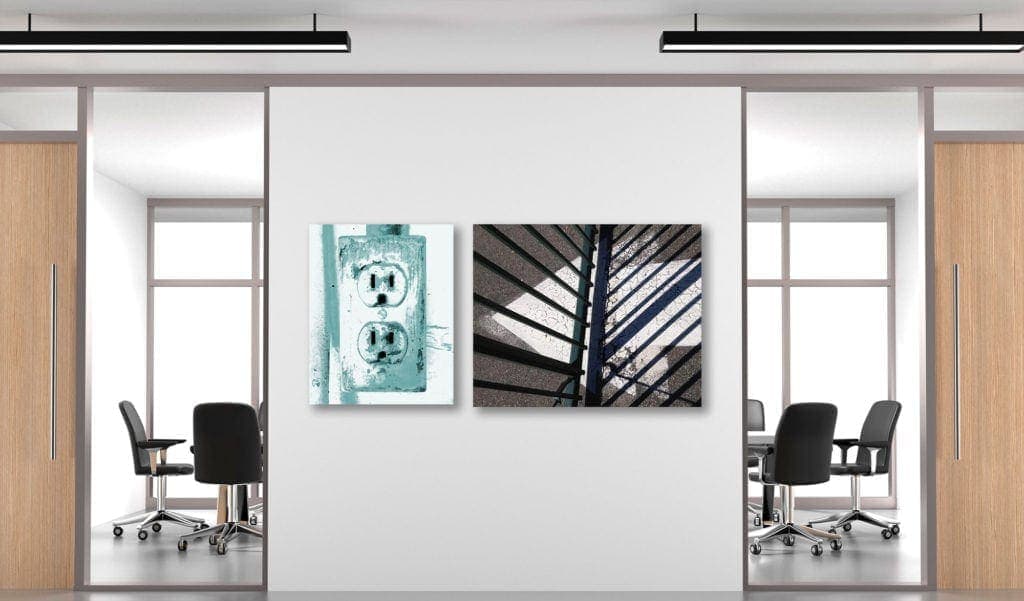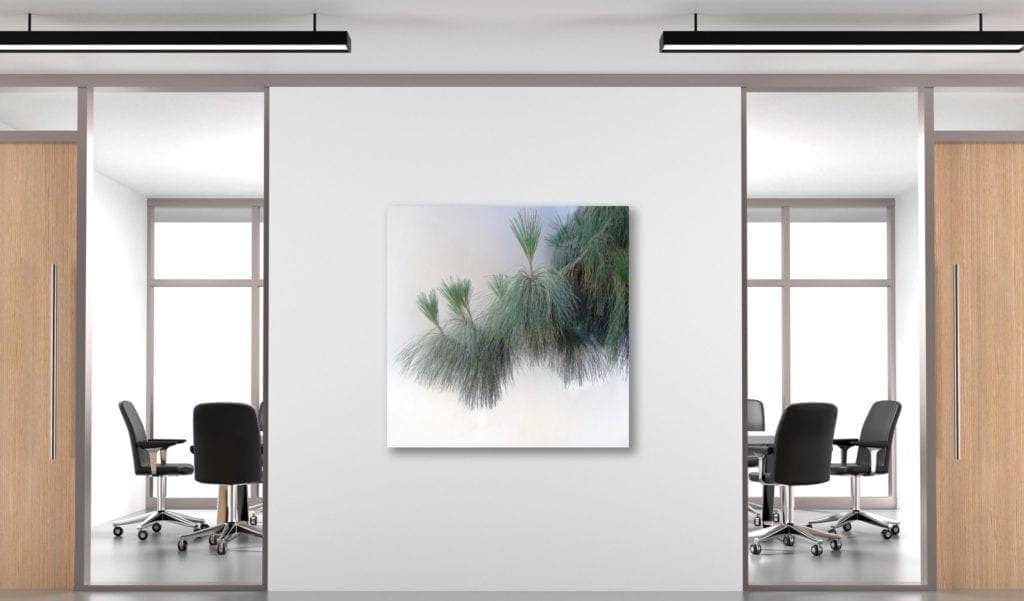Two subjects arise early in discussions of starting a corporate art program: finances and morale. In short:
- How much will it cost and how can we justify it, given our bottom line?
- Who will deal with the inevitable griping among staff over artworks’ style and subject matter?
What is a corporate art style?
Corporate art can be anything the Board of Directors, CEO, or collection curator choose. There is no single style or subject matter appropriate to every corporate setting, although it will be seen that there is a tendency to play it safe when choosing pieces. Often, there is also an in-house gravitational field around the (very mistaken) idea that artworks in the corporate collection must relate to the business or mission statement in a literal fashion.

Corporate art isn’t synonymous with commercial art, although a corporate collection could consist of commercial art works if they reflect the spirit, character, mission, or something about the place and people where they hang. The exact criteria might not matter so much as simply having them — applying the principles of selection consistently always help a collection to hang together, to have coherence no matter how varied and dynamic the individual pieces might be.
Cost
We preface any remarks about the cost of artwork by pointing out that even companies that watch the bottom line carefully have evaluated the wisdom of adopting corporate artwork — and, sometimes, a de facto corporate artist. They discovered the upsides even in a cost-benefit context, and so can any company. Large or small is irrelevant except, perhaps to the art budget.
Corporate-appropriate art (whatever that means) comes at every price point. Prints and off-the-shelf frames or modern, frameless mounts are fine if the quality is there; a corporate collection doesn’t have to contain only original works unless the budget can support that prestige. There may even be something to be said for encouraging and showcasing original art by employees but remember: their art isn’t yours unless it is clearly understood to be work-for-hire or you purchase the work and all the rights you want — separate from any employment agreement.

Re-purposing and re-circulating artwork can amortize its cost over multiple uses and over time. Artwork that is retired from the walls, if it was regarded favorably, may be stored indefinitely, to bring out much later when it will seem new(ish) again. A collection may sometimes be shuffled, re-hung, pieces changed from one wall or office to another. A retiring employee — or a valued performer — can be rewarded with something from the collection.
Think creatively. There are plenty of ways to put art to work for you, and there is at least one corporate art style for every company.
Manufacturing and Art?
We get it. In the nitty-gritty world of supply chains, workplace safety, and just-ship-the-product, wall art and sculpture might be a way down the list of priorities.
Marlin Ouverson has rolled 600-pound wheels for roller coasters into a manufacturer’s parking lot to photograph them in the right light. The secret, for him, to photographing urethane parts on a client’s slender budget was to find the beauty and then pursue it in the lens. When the light reflected off blacktop sparkles like a starscape, he notices and finds ways to translate that into meaningful imagery.
Raise the bar for what is expected in the work environment. Elevate the aesthetic to show greater respect for any business, its employees, and the clientele.
Morale
If staff and customers are stimulated to discuss and react, the artwork is doing what art has always done. If the people are talking, consider the silver linings…
A firm policy of rotating the collection monthly or quarterly is enough to give most critics a chance to roll their eyes and offer their opinions, mitigated by the knowledge that something new will be coming along.

I love this piece on my office wall. Makes me happy every time I see it.